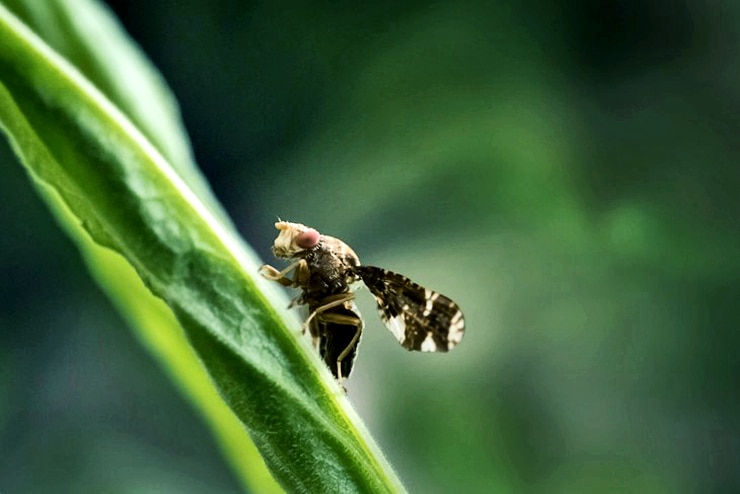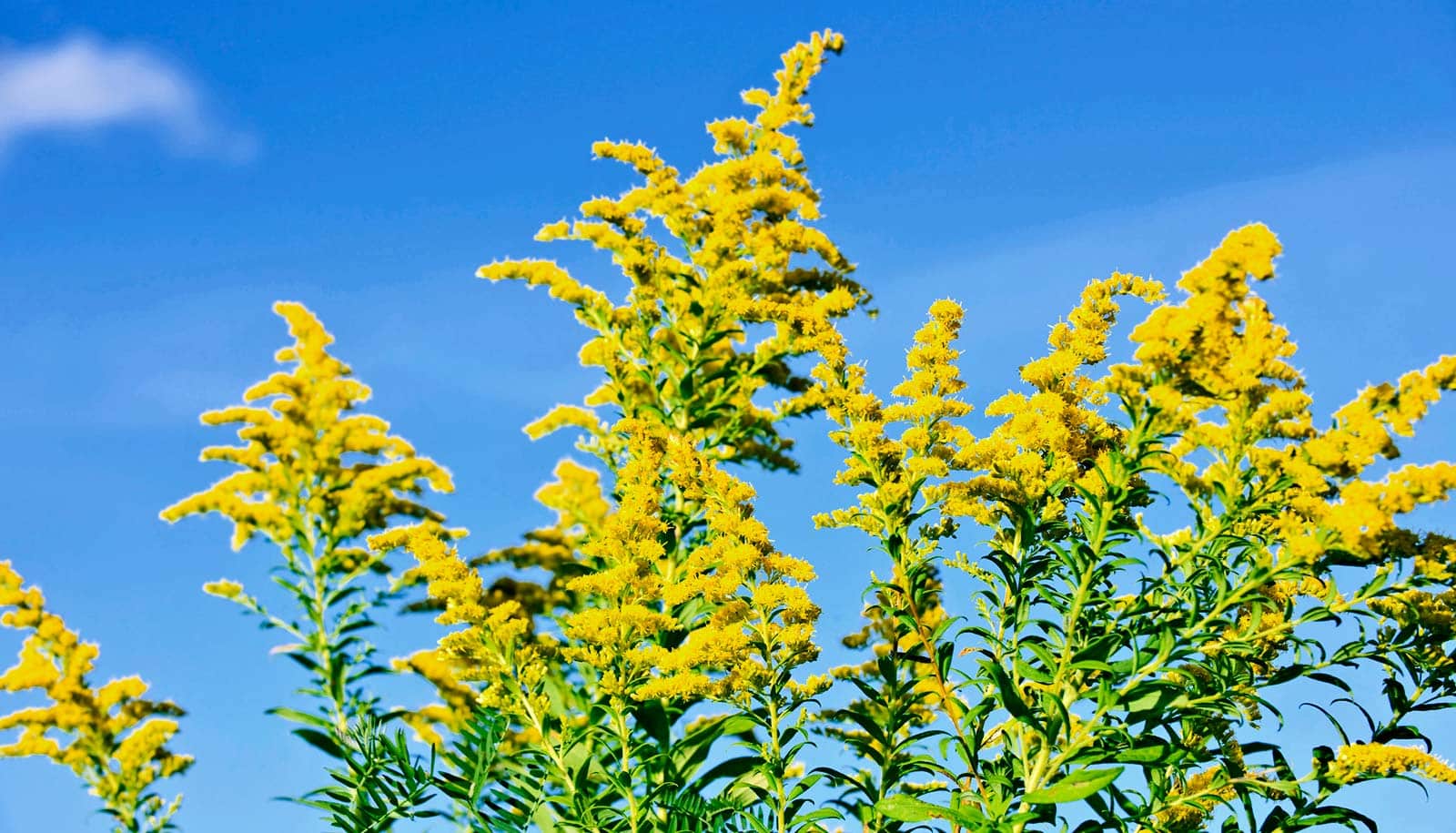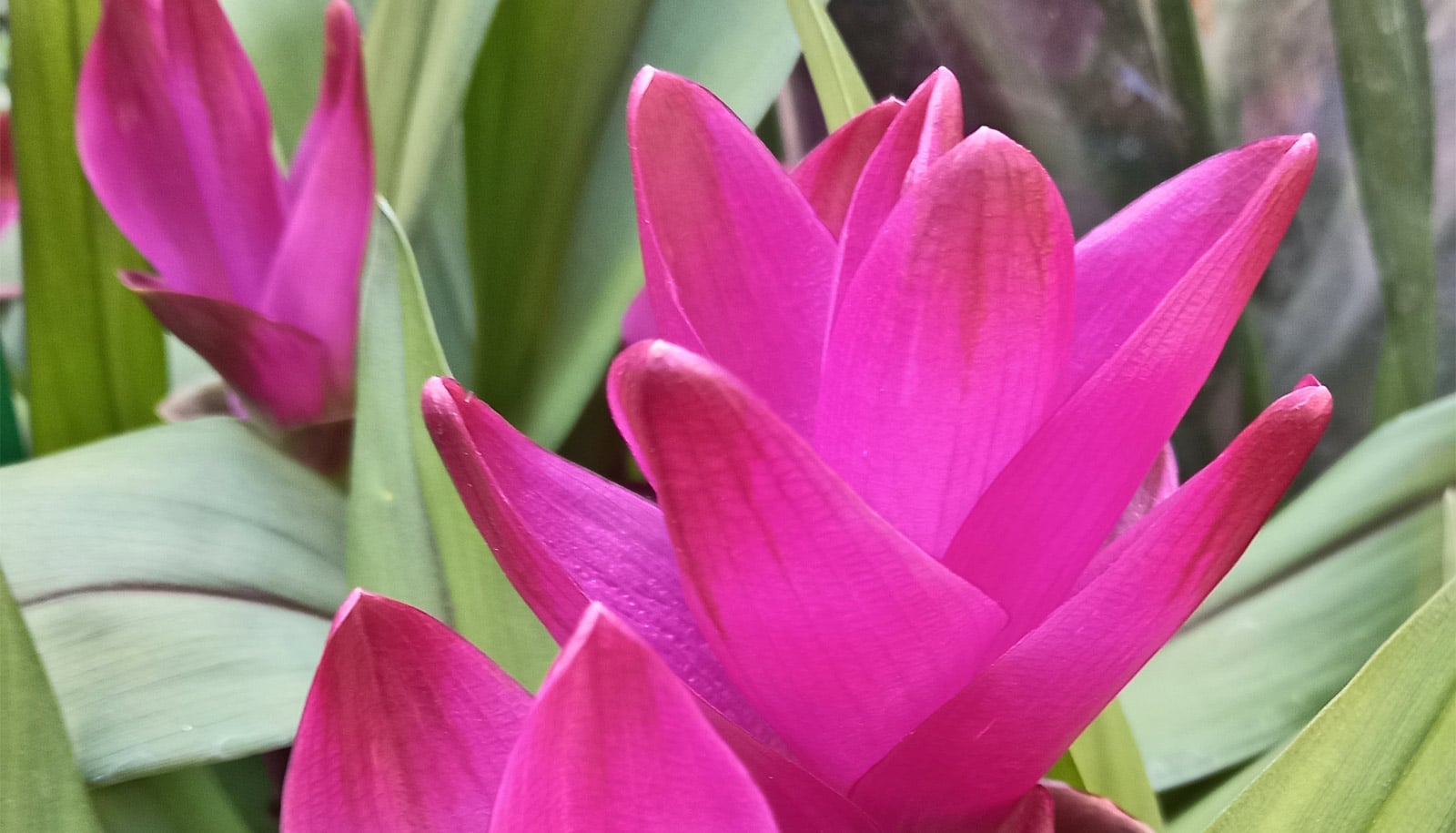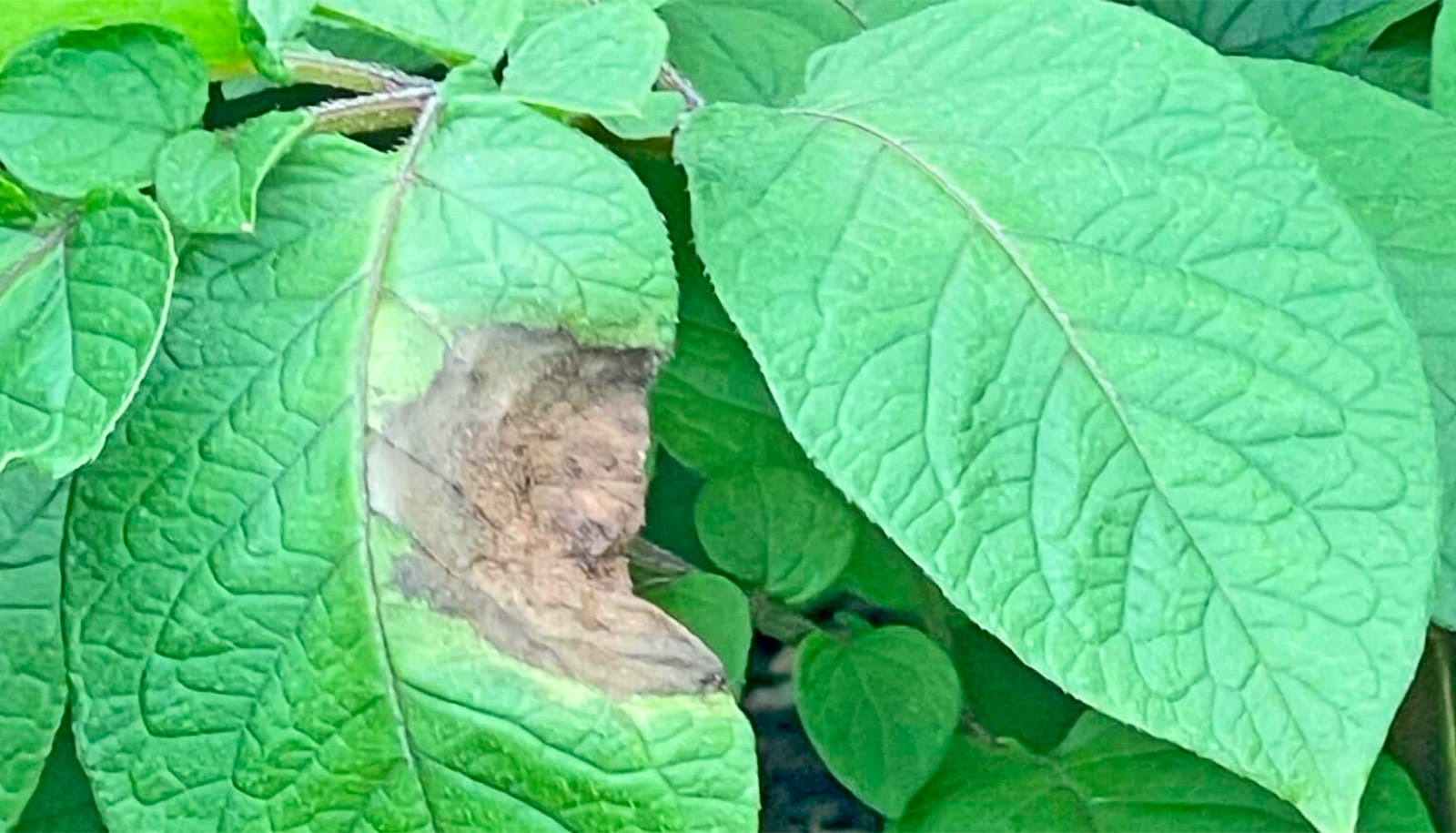New research suggests that goldenrod can protect itself from flies by first “smelling” its attacker and then initiating its defenses.
“We found another weapon in the arsenal of defenses that plants might employ against their herbivore attackers, in this case eavesdropping on a very specific chemical signal from an herbivore to detect its presence and prepare for future attack,” says Anjel Helms, a postdoctoral fellow in entomology at Penn State.

According to Helms, the gall-inducing flies (Eurosta solidaginis) are specialists that, in Pennsylvania, feed only on tall goldenrod (Solidago altissima). The male flies emit a blend of chemicals that is attractive to females. Once the females arrive and the eggs are fertilized, the females deposit their eggs within the stem of a goldenrod plant. After the eggs hatch, the larvae begin feeding on the tissue inside the stem. Chemicals in the saliva of the larvae are thought to cause the plant to grow abnormally and form a gall, or protective casing of plant tissue, around the larvae.
“The flies strongly reduce the plant’s fitness by decreasing the number of seeds it produces, as well as the sizes of those seeds,” says John Tooker, an associate professor of entomology at the university.
“That’s because when the plant’s tissues are damaged by the insect, it diverts its energy away from seed production and instead toward production of the gall,” Tooker says.
“…over time, as the fly has adapted to take advantage of the plant, the plant has adapted to protect itself from the fly.”
Helms and her colleagues previously found that goldenrod plants exposed to chemicals from the male flies produced greater amounts of a defense chemical known as jasmonic acid when they were damaged by herbivores.
In their current study, the scientists aimed to identify the specific chemical compounds goldenrod plants are detecting and to determine how sensitive the plants are to the compounds.
The researchers first identified the chemical compounds that make up the male fly’s chemical emission. After identifying and quantifying the compounds in the male fly emission, the researchers exposed goldenrod plants to the individual compounds and examined their defense responses. They found that the plants responded most strongly to a compound in the blend called E,S-conophthorin.
“E,S-conophthorin is the most abundant compound emitted by the flies,” says Helms. “The compound appears to provide a strong and reliable cue for the plants to detect.”
Next, the team examined goldenrod’s sensitivity to E,S-conophthorin by exposing plants to different concentrations of the compound and measuring their defense responses.
Chewed-up plants tell hungry pests to keep looking
“We found that goldenrod plants are sensitive to even small concentrations of this compound,” says Tooker. “This is significant because it likely means that the plant has a dedicated mechanism to perceive this compound. The results provide evidence that goldenrod can detect a single compound from the fly, supporting the idea that there is a tight co-evolutionary relationship between these two species. In other words, over time, as the fly has adapted to take advantage of the plant, the plant has adapted to protect itself from the fly.”
According to Tooker, the team’s previous work was the first to demonstrate a plant “smelling” its herbivore, and its current work is the first to document exactly what compound the plants are detecting.
“How plants perceive volatile chemicals is poorly understood,” says Tooker, “so having a somewhat unique or distinct molecule to explore that mechanism is promising, and a direction we will explore in the future.”
The findings appear in the journal Nature Communications.
Additional authors of the paper are from ETH Zurich, the University of Hamburg, and the USDA-Agricultural Research Service.
The US National Science Foundation, Swiss National Science Foundation, David and Lucile Packard Foundation, and ETH Zurich supported this research.
Source: Penn State



